
Let’s be honest. We’ve all heard about the must-have “superfoods.” Berries from the Amazon, seeds from halfway across the world, and powders that cost a small fortune. But what if I told you that some of the most powerful, health-boosting foods on the planet are hiding in plain sight!
They’re hanging out at your local thhela-wala (fruit cart), sitting in your neighborhood market, and probably cost less than your morning cup of fancy coffee.
We live in India, a land blessed with an incredible variety of fruits that change with every season. These aren’t just sweet treats; they are nature’s medicine, packed with everything we need to feel great. It’s time to stop overlooking these humble heroes and give them the starring role they deserve on our plates.
As Dr. Deepak Kumar Soni, Ayurveda expert at Tata 1mg, Gurgaon, explains:
- Pomegranate seeds are excellent for improving digestion and can easily be added to your daily diet.
- Bael fruit (also available year-round as Bael churna, or dried powder) supports and soothes the digestive system.
- Jamun seeds are even more effective than the fruit itself, when dried and powdered, they help maintain normal blood sugar levels.
- Guava (Amrood) is a wonderful fruit for keeping the digestive system strong and balanced.
Forget the fads. Let’s get to know the real superstars. Here are 6 amazing Indian fruits that are packed with goodness and backed by science.
1. Guava (Amrood): The Everyday Immunity Champion
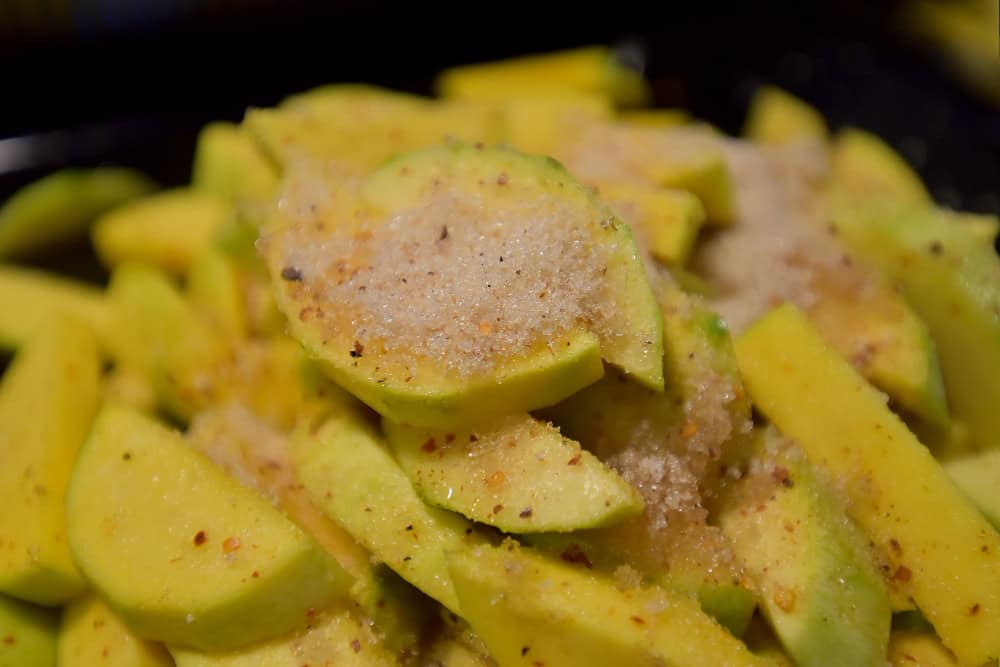
You see this green, bumpy fruit everywhere, right? It’s so common, we almost forget how amazing it is. The guava is a true workhorse, and its number one superpower is Vitamin C.
We all think of oranges when we think of Vitamin C, but get this: a single guava can have up to four times more Vitamin C than an orange [1]. Yep, you read that right. This vitamin acts as a shield for your body, helping to boost your immune system so you can fight off those annoying colds and coughs.
But it doesn’t stop there. Guava is also loaded with fiber. Think of fiber as a little scrub brush for your digestive system. It keeps things moving, prevents that heavy, blocked-up feeling (constipation), and helps you feel full and satisfied. This makes it a fantastic snack if you’re watching your weight.
And for anyone worried about blood sugar, the guava is your friend. Because it’s so high in fiber, it releases its natural sugars slowly, so you don’t get that wild “sugar rush” and “crash.” Research has even shown that guava (especially without the peel) can help lower blood sugar levels, making it a smart choice for many [2].
How to enjoy it: The best way is the simplest. Just slice it up and sprinkle it with a little kala namak (black salt) and a tiny pinch of red chili powder. It’s a flavour explosion! You can also blend it into a fresh juice or smoothie.
2. Jamun (Black Plum): The Purple Powerhouse
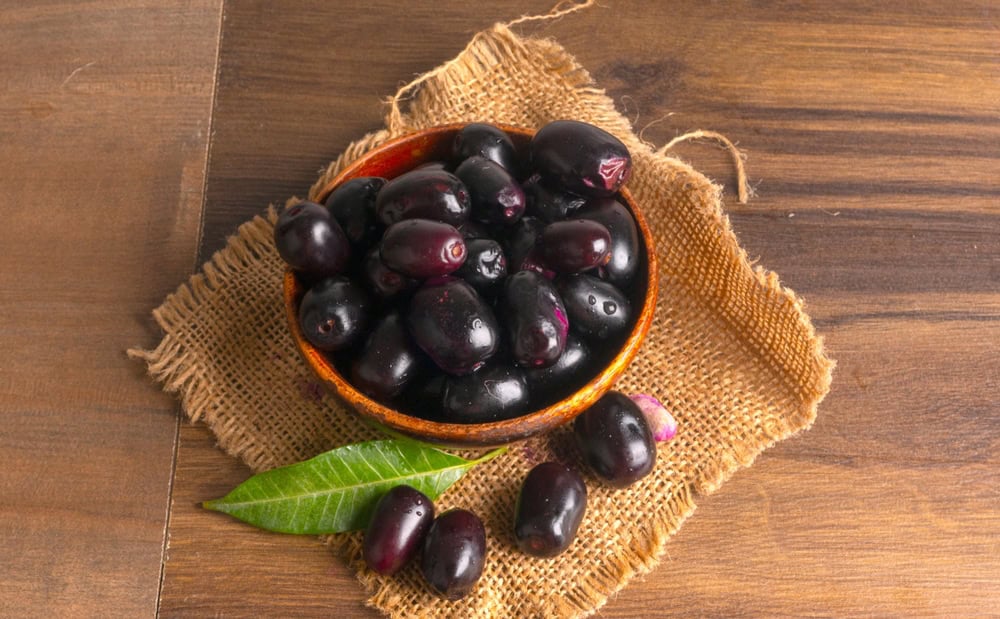
When the first rains of monsoon hit, the markets turn a beautiful, deep purple. That’s the Jamun making its grand entrance. This small, dark fruit has a unique sweet, sour, and slightly tangy taste that leaves a fun purple stain on your tongue.
For centuries, Jamun has been a rockstar in traditional Indian medicine, especially for managing diabetes. And modern science is now catching on to why. Jamun contains special ingredients (like jamboline and jambosine) that do something really clever: they help slow down the speed at which your body turns food into sugar [3]. This means less of a sugar spike after meals, which is fantastic news for anyone trying to keep their blood sugar in check.
It’s not just for diabetes, though. Jamun is a great source of iron, which your body needs to make healthy blood. If you often feel tired or low on energy, it could be a sign you need more iron, and Jamun can help. It’s also packed with antioxidants, which are like your body’s personal security guards, fighting off damage and keeping your skin and organs healthy.
How to enjoy it: The most fun way is to just eat them fresh, one by one. But you can also de-seed them and blend them with a little water and jeera (cumin) powder for a refreshing, tangy drink.
3. Bael (Wood Apple): The Gut-Soothing Hero
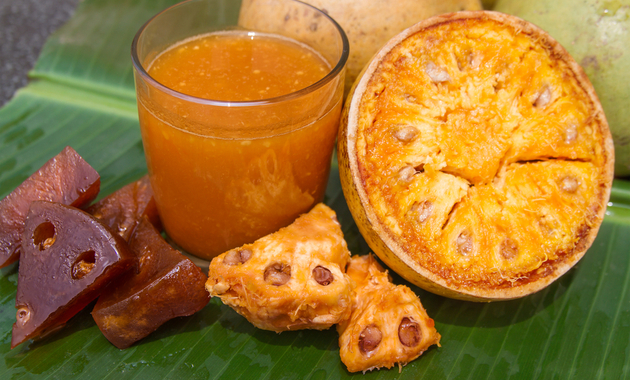
This one might look a little intimidating. The Bael fruit, or Wood Apple, has a shell that’s literally as hard as wood. But inside? It’s pure magic for your stomach. If you’ve ever had a bad case of “Delhi belly” or just a generally upset tummy, Bael is what you need.
It has a unique ability to calm down an irritated digestive system. It’s famous for helping to stop diarrhoea and dysentery. The fruit contains tannins, which help reduce inflammation (that angry, swollen feeling) in your gut and help it heal [4]. It’s so effective that you’ll often find it sold as a dried powder or murabba (preserve) just for this reason.
But here’s its cool secret: Bael is a gut manager. While the unripe fruit is great for diarrhoea, the ripe fruit is a fantastic natural laxative. The ripe pulp is full of sticky, fiber-like stuff that helps clear out your system if you’re constipated. It’s a truly smart fruit!
How to enjoy it: You can’t just bite into it! You have to crack the shell (a hammer or a heavy pestle works). The yellow-orange pulp inside is then soaked in water, mashed, and strained to make a delicious Bael ka Sherbet. A little jaggery or sugar is added to sweeten it. It’s the perfect cooling drink for a hot summer day.
4. Star Fruit (Kamrakh): The Glistening Hydrator

This is probably the prettiest fruit on the list. When you slice it, you get perfect little stars! The Star Fruit is juicy, waxy, and has a tangy, slightly sour-sweet taste.
Its biggest benefit is that it’s super low in calories and super high in water. It’s basically a delicious, hydrating snack. If you’re thirsty or just want something to munch on without worrying about calories, this is a perfect choice. It’s also a decent source of fiber and Vitamin C.
BUT, A VERY IMPORTANT WARNING: This fruit comes with a serious catch. Star Fruit contains a natural substance (a neurotoxin called caramboxin) and high levels of something called oxalic acid. For a person with healthy kidneys, this is no problem; your body just filters it out.
However, for anyone with kidney problems, even mild ones, Star Fruit can be extremely dangerous, even life-threatening [5]. It can cause “star fruit poisoning,” leading to confusion, seizures, or worse. So, the golden rule is: If you have (or even suspect you have) any kidney issues, please avoid this fruit completely.
How to enjoy it (if your kidneys are healthy): Slice it up and eat it raw. Its tangy flavour is also amazing when juiced or added to salads for a zesty crunch.
5. Custard Apple (Sitaphal): Nature’s Creamy Dessert
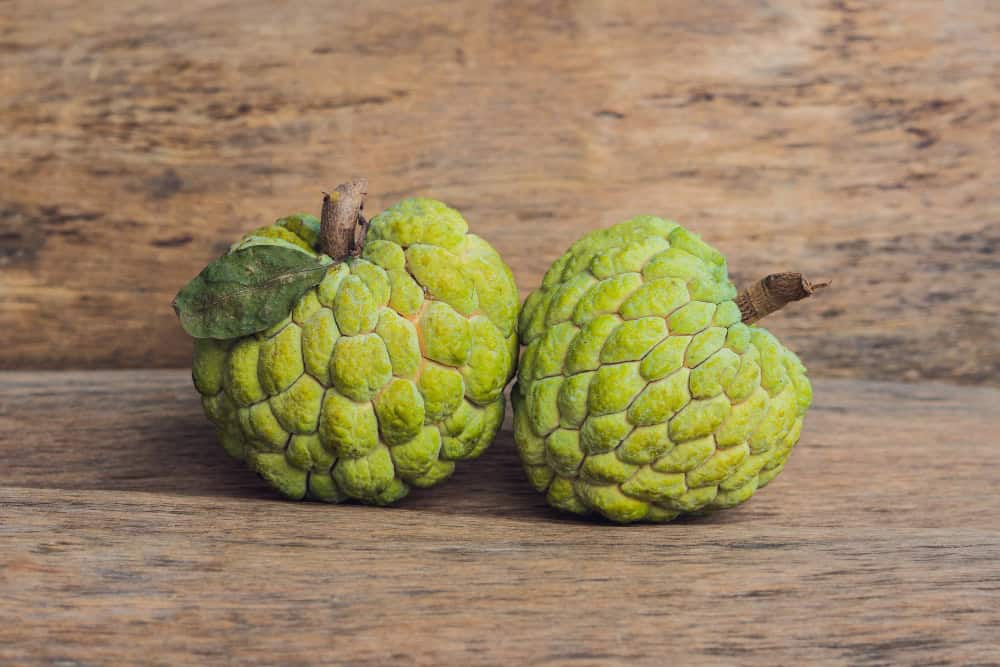
As the weather gets a little cooler, this bumpy, green, heart-shaped fruit shows up. The Custard Apple is an absolute treat. People sometimes avoid it, thinking it’s “fattening” because it’s so sweet and creamy.
Let’s bust that myth. Yes, it’s higher in calories than, say, a watermelon, but it’s packed with good calories and incredible nutrients. Think of it as nature’s energy bar. It’s loaded with potassium (which is vital for controlling blood pressure) and magnesium (an amazing mineral that helps relax muscles and calm your mind). Feeling stressed or tired? A bowl of custard apple pulp is one of the best, most natural pick-me-ups you can have.
It’s also surprisingly high in Vitamin B6, which is important for brain health and keeping your mood stable. The creamy pulp is very easy to digest, making it a great food for growing kids and anyone recovering from an illness.
How to enjoy it: This one is a hands-on fruit. Crack it open and scoop out the creamy white pulp with a spoon, spitting out the large black seeds. It’s also delicious blended (after de-seeding) into a rich, healthy milkshake or used to make homemade ice cream.
6. Pomegranate (Anaar): The Little Red Heart-Helpers
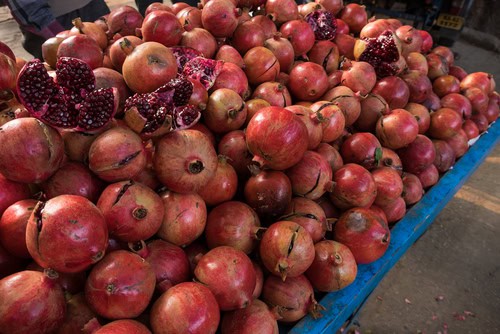
Okay, so pomegranates are loved all over the world, but the ones we get in India are truly special. Opening one up to find those sparkling red jewels, or anaar-daana, is always a delight.
Pomegranates are, quite simply, one of the best fruits you can eat for your heart. They are filled to the brim with powerful antioxidants, more than you’d find in red wine or green tea.
So, what do these antioxidants do? Imagine them as little bodyguards that patrol your bloodstream. They help protect your cholesterol from getting damaged (which is what makes it “bad”), and they help keep your blood vessels clear and flexible. This all adds up to better blood pressure and a healthier, happier heart.
This fruit is also a great source of vitamins and helps in building up your blood, which is why you’ll often see it recommended to people who are feeling weak or run-down.
How to enjoy it: The possibilities are endless! Eat the seeds with a spoon, sprinkle them over a bowl of dahi (yogurt) or raitas, toss them into a salad for a juicy crunch, or use them to garnish poha or upma. And of course, a glass of fresh pomegranate juice is pure bliss.
The Big Takeaway
You don’t need to hunt for expensive, imported “superfoods.” The next time you walk past a fruit stall, take a closer look.
These local, seasonal gems are packed with more power, nutrition, and flavour than you might think. By choosing to eat them, you’re not just supporting your own health, you’re supporting local farmers and eating in a way that’s better for the planet.
So, go ahead and add a little more desi goodness to your plate. Your body will thank you for it.
FAQs
After reading all this, you might still have a few questions. That’s great! It shows you’re thinking about your health. Let’s tackle some of the most common ones.
1. “I have diabetes. Aren’t these fruits full of sugar?”
This is a very important and common question! Here’s the deal: yes, fruits contain natural sugar (called fructose). But when you eat the whole fruit, that sugar comes packaged with a lot of fiber.
2. “Is it better to eat the whole fruit or drink its juice?”
Eating the whole fruit is almost always better. When you juice a fruit, you strip away most of that amazing fiber we just talked about. What you’re left with is mostly the sugar and water. This can cause a much faster blood sugar spike, almost like drinking a soft drink.
3. “What’s the best time to eat fruit?”
Honestly, the best time to eat fruit is anytime you’re hungry for a healthy snack!
4. “Are there any side effects? You mentioned a warning for Star Fruit.”
For most healthy people, these fruits are incredibly safe. The big, non-negotiable warning is for Star Fruit (Kamrakh). To be crystal clear: If you have any known kidney problems, even mild ones, you must avoid star fruit completely.
References:
1. https://foodstruct.com/nutrition-comparison-text/guava-vs-oranges#:~:text=Guava%20contains%20more%20protein%20than,B12%20Vit.
2. https://pmc.ncbi.nlm.nih.gov/articles/PMC5071920/
3.https://pmc.ncbi.nlm.nih.gov/articles/PMC12358234/#:~:text=It%20was%20also%20stated%20that,in%20the%20body%20%5B25%5D.
4. https://pmc.ncbi.nlm.nih.gov/articles/PMC6034160/
5.https://www.sciencedirect.com/science/article/abs/pii/S0041010120303925#:~:text=The%20star%20fruit%20is%20consumed,absorption%2C%20metabolism%2C%20and%20excretion%20of
(The article is written by Mantasha, Executive, Clinical Health & Content, and reviewed by Monalisa Deka, Senior Health Content Editor)